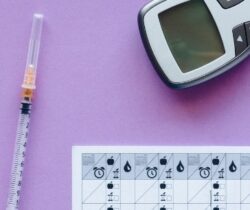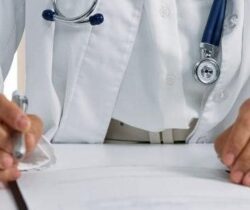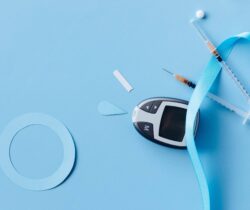It is important to know the signs of type 2 diabetes. The sooner you get a diagnosis, the sooner you can put measures in place in order to manage the condition and prevent health complications.
Type 2 diabetes is a condition in which the body is unable to produce enough of a hormone known as insulin or the insulin being made does not do its job like it should (source: Diabetes Australia). Insulin acts like a key to let blood sugar into cells to be used as energy.
Without insulin, glucose sits in the blood where it can build up and cause damage to various parts of the body if it is not managed. That’s why it’s important to know the signs of type 2 diabetes and to talk to your doctor as soon as possible.
Are there early signs of type 2 diabetes?
There are early signs of type 2 diabetes that are caused by high blood glucose levels. However, do not wait for these signs to develop. The most common symptom of type 2 diabetes is no symptom at all.
If you have any of the risk factors for type 2 diabetes, it is strongly recommended that you go to your doctor to get tested and diagnosed.
These risk factors include;
- Diagnosed with prediabetes
- Of Aboriginal or Torres Strait Islander descent
- Of Pacific Islander, Maori, Asian, Middle Eastern, North African or Southern European descent
- Over 40 years old
- Diagnosed with high blood pressure or cholesterol
- A family history of type 2 diabetes
- History of cardiovascular disease (e.g. heart attack, angina, stroke, narrowed blood vessels)
- Diagnosed with polycystic ovary syndrome (PCOS)
- Had gestational diabetes during pregnancy
- Taking certain antipsychotic or corticosteroid medication
Additionally, lifestyle risk factors for type 2 diabetes include:
- Low levels of physical activity
- Unhealthy eating habits
- Cigarette smoking
The early signs of type 2 diabetes
If you have several risk factors and are showing the below signs, it is even more important that you see your doctor, as you could have type 2 diabetes;
- Feeling excessively thirsty
- Passing more urine
- Feeling tired and lethargic
- Always feeling hungry
- Having cuts that heal slowly
- Itching, skin infections
- Blurred vision
- Gradually putting on weight
- Mood swings
- Headaches
- Feeling dizzy
- Leg cramps
How do I know if I have type 2 diabetes?
The only way to know if you have type 2 diabetes is to get a diagnosis from your doctor after they check your blood glucose levels.
Don’t wait until you have these signs to consult your doctor, as an early diagnosis will make type 2 diabetes more manageable and health complications related to diabetes prevented or minimised.
Am I at risk of type 2 diabetes?
Before you consult your doctor, there is a series of questions you can complete that will help determine your risk for developing type 2 diabetes within the next 5 years. You can complete these questions online.
How does my doctor diagnose type 2 diabetes?
There are four kinds of tests that can be used to diagnose type 2 diabetes.
- The most common test is the fasting blood glucose test. You fast for at least 8 hours, at which point a blood sample is taken to determine if your blood glucose is in the diabetes range. A second fasting blood glucose test will be needed to confirm the diagnosis.
- Another type of test is the oral glucose tolerance test (OGTT) which starts with a fasting blood glucose test, but afterwards you drink a 75g glucose drink, followed by blood glucose tests 1 and 2 hours later.
- The random blood glucose test does not require fasting and can be done at any time of the day. A second blood glucose test will be needed to confirm the diagnosis
- The HbA1c test gives an average of your blood glucose levels over the past 10 to 12 weeks, and doesn’t require you to fast for it. A second HbA1c will be needed to confirm the diagnosis
(Source: Better Health)
What does it mean if I have been diagnosed with type 2 diabetes?
If you have been diagnosed with type 2 diabetes, there are ways to manage your condition and prevent diabetes related health complications. They include;
- Eating a healthy diet, which helps manage your blood glucose level as well as your body weight
- Engaging in regular exercise; which helps insulin work more effectively, lowers blood pressure and reduces the risk of heart disease
- Regular blood glucose monitoring, so you can make sure your treatment is working and make any alterations if necessary
Your doctor may also prescribe you medication to help treat diabetes if necessary, like insulin injections or a medication to help keep your blood glucose at manageable levels.
Can the Life! program help me find out if I have type 2 diabetes?
With the the Life! program, you can take an online health check to help you find out your risk of type 2 diabetes with a simple form that takes 3 minutes.
Life! is a free healthy lifestyle program that helps you improve your eating habits, increase your physical activity and manage stress. You can choose from a group course or the Telephone Health Coaching service.
Our experienced health professionals will help you make small changes to your lifestyle so that you can achieve your health goals and reduce your risk of type 2 diabetes and cardiovascular disease. Life! is funded by the Victorian government and managed by Diabetes Victoria. You can check your eligibility for the program here.
Sources
https://www.healthdirect.gov.au/type-2-diabetes
https://www.diabetesaustralia.com.au/about-diabetes/type-2-diabetes/
https://www.betterhealth.vic.gov.au/health/conditionsandtreatments/diabetes-type-2
https://lifeprogram.org.au/wp-content/uploads/2021/07/20171217_RTGHAUSDRISK_NewBanner_V06.pdf
https://lifeprogram.org.au/learn-about-life/#health-check
Reviewers:
Elleni Kaias, Accredited Practicing Dietitian | Primary Care Engagement Lead
Kristie Cocotis, Head of Prevention and Health Promotion
Sarah Dubé, Strategy and Engagement Lead
Ria Cheripuram, Digital Communications Officer
Tegan Kohlman, Communications and Social Marketing Officer





